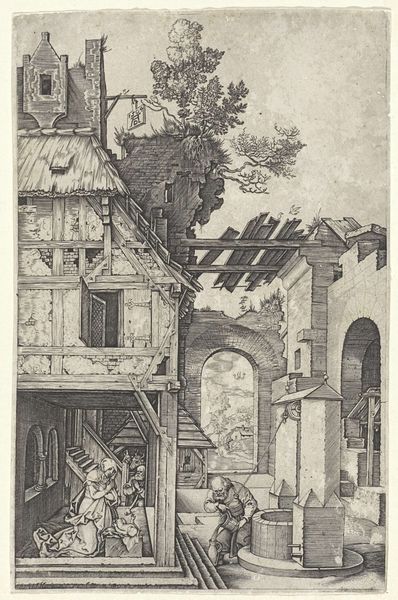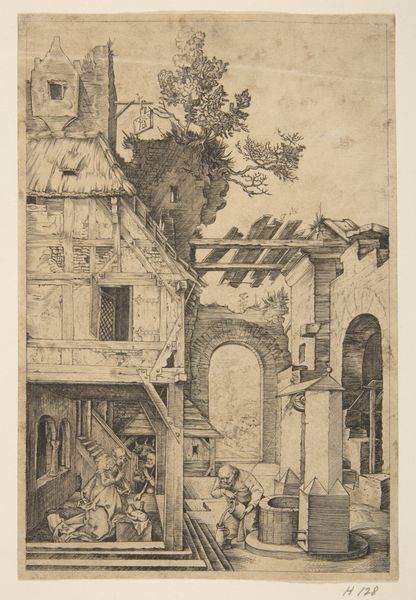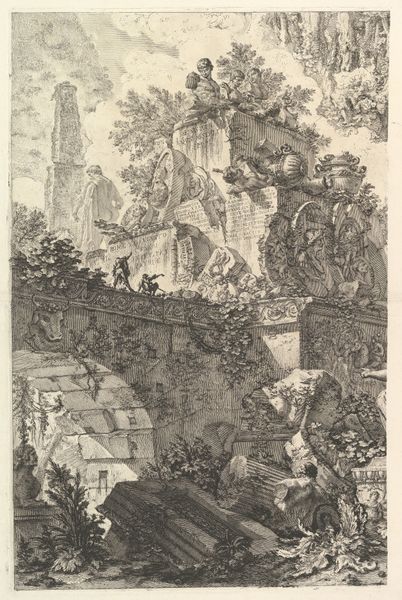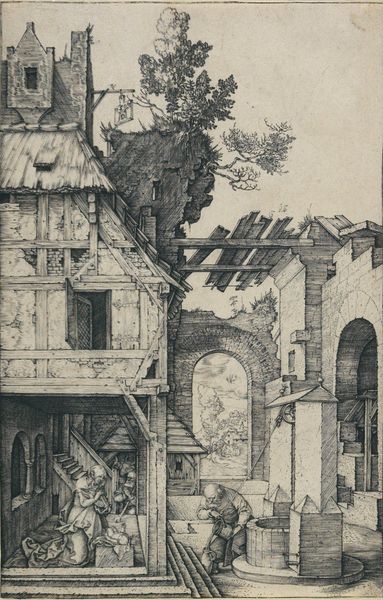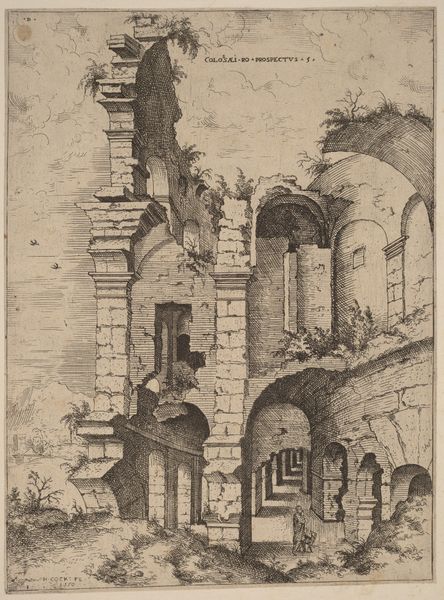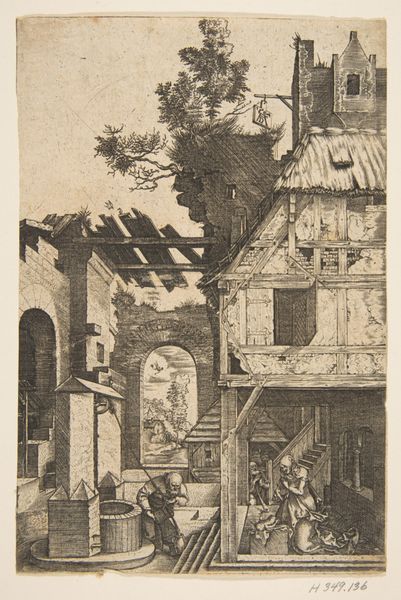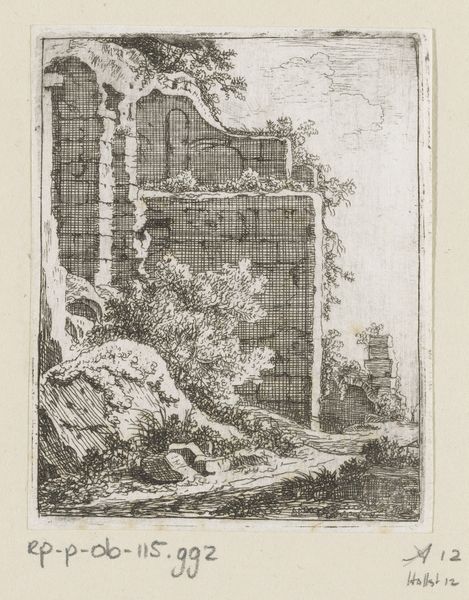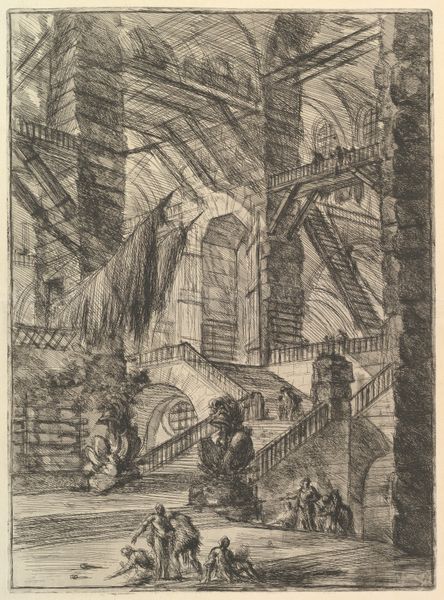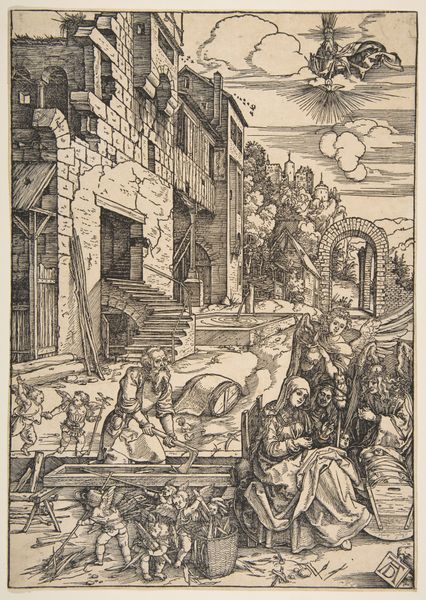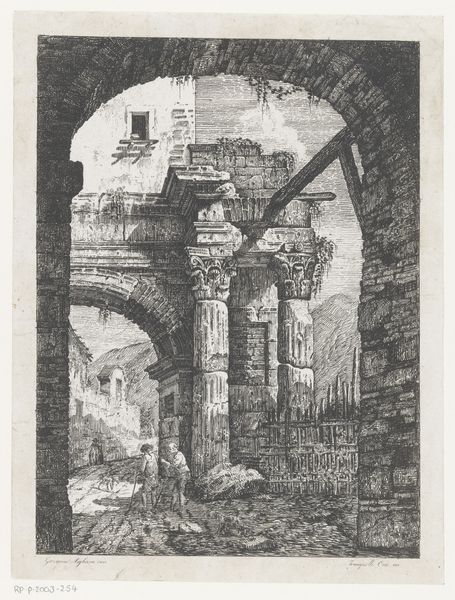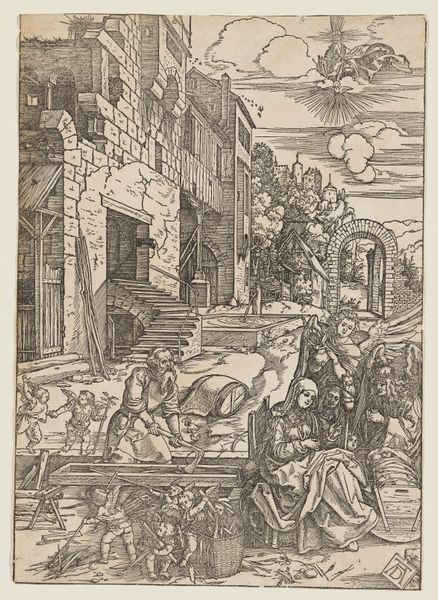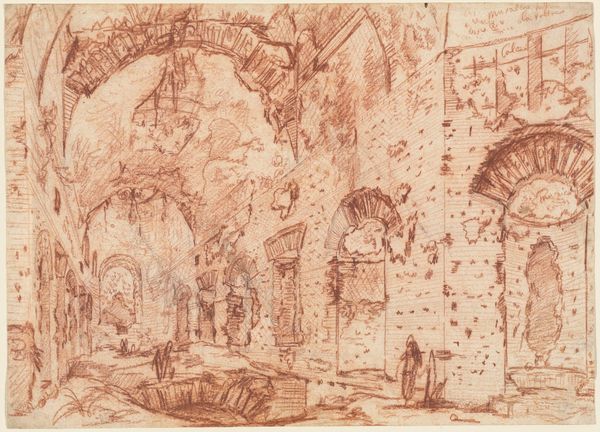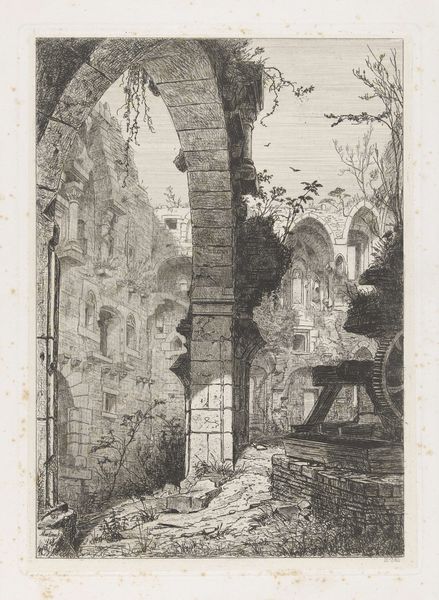
print, etching, engraving
# print
#
etching
#
landscape
#
figuration
#
history-painting
#
northern-renaissance
#
engraving
Dimensions: 164 mm (height) x 118 mm (width) (bladmaal)
Curator: Here we have Albrecht Dürer’s “Nativity,” an engraving from 1504. Editor: The scene appears… fragmented, almost distressed. The architecture feels like a ruin, even though there are clear signs of activity. And that looming tree growing out of the stones adds to the precariousness. Curator: Precisely! Dürer masterfully uses those contrasting elements to convey deeper meanings. The ruined architecture and the well remind me of symbolic representations of a fallen world being redeemed through Christ's birth, a very potent symbol. Editor: You're right, the textures too reinforce this dichotomy, don't they? There is fine detail on the architecture compared to the starker rendition of nature behind it. As an engraving, Dürer would have needed expert metalworking knowledge, crafting tools precisely to etch the image into the copper. Curator: And he employs those textures to really pack in complex symbolism. The Nativity itself is rendered humbly, but even the manger evokes a strong, deeply familiar, archetype, like a stage or the very foundation of faith itself. The scene calls back to cultural memory. Editor: All the people in the image also seem busy! But I wonder how conscious viewers would have been of Dürer’s printing practice? There is a dissonance between the subject and the mass reproducibility through this early printing technology. How easily would it have reached its audiences at the time? Curator: I think it's likely Dürer considered that the divine event in question had to become ubiquitous to fulfill the gospel. In essence, its reach and distribution mimics and supports the symbolic aim of this work. Editor: A fascinating contradiction: creating a single, powerful work that inherently aims to generate endless copies through physical means, which paradoxically affirms his skill and expands his potential viewership. I appreciate seeing how Dürer utilizes a medium so explicitly concerned with multiplicity to portray an event thought to happen just once in history. Curator: For me, it showcases Dürer's profound grasp of theology, seamlessly woven into his artistic expression, making “Nativity” a profound meditation on birth and rebirth in many senses. Editor: Definitely. Thinking about it as an artifact as much as a representation deepens its resonance.
Comments
No comments
Be the first to comment and join the conversation on the ultimate creative platform.
